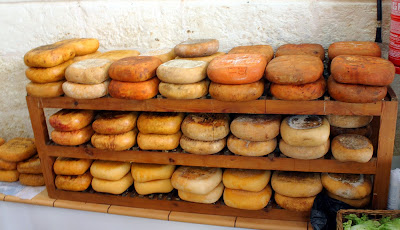Well what do you know? the morning was grey, gloomy and drizzly! Just as well I completed a short trip out on Thursday morning although there’s very little to report from yet another cool, blowy and truncated session. I fear Spring migration has ended before it began and that soon it will be time to hang up the bins and let the birds get on with whatever they do in the summer.
Conder Green proved very uninspiring, the high water levels giving little in the way of birds except for several Reed Buntings, two each of Sedge Warbler and Reed Warbler and an unseasonal Goosnader. Glasson Dock was marginally better with a good selection of singing warblers as in 4 Blackcap, 2 Chiffchaff and singles of both Common and Lesser Whitethroat.
Whitethroat
Fortunately, and for regular blog readers who expect more than a couple of lines of prose and one picture from Another Bird Blog, there are more birds from Menorca 1st to 15th May.
When exploring the area around Cap de Cavallaria in the north of Menorca I came across a very pale looking hedgehog. I managed to take one picture before the animal scuttled off into the undergrowth. By searching the Internet later I discovered the animal to be the North African or Algerian Hedgehog Atelerix algirus.
North African or Algerian Hedgehog Atelerix algirus
The hedgehog is found in Algeria, France, Libya, Malta, Morocco, Tunisia and Spain. Because this hedgehog is native to Africa, it has been suggested that it was introduced by humans to the other countries where it is now found, including France, Spain and the island of Menorca. Specimens found inside a Bronze Age grave at the site of Biniai Nou in Menorca dated from the 13th century and indicated a rather recent arrival of the species on the island, probably via the Almohad invaders of that period.
The North African Hedgehog closely resembles the European Hedgehog; however, there are several distinct differences between the two species. The North African Hedgehog tends to be smaller than its European counterpart. Its face is light in colour, usually appearing to be white, and the legs and head are brown. The underbelly varies in colour, and is often either brown or white. Its ears are highly visible on the head of the animal and are large in size. The body is covered in soft spines that are primarily white with darker banding. It was an interesting mammal find and a new one to add to my Menorca mammal list alongside the common and easily seen Hermann’s Tortoise and the less easily seen Stoat.
Hermann's Tortoise
During the second week of our holiday there seemed to be a small influx of Red-footed Falcons, raptors which are late migrants and birds of open countryside, seen by us on overhead wires or circling recently cut fields in the areas of Cavallaria, Addaia and Es Grau. The largest group we saw was of 4 birds circling over Es Grau but a fellow hotel guest saw 10 red-foots together near Addaia just a day or two later.
Red-footed Falcon
Red-footed Falcon
Red Kites seemed pretty plentiful this year while the normally common Booted Eagles proved scarce. Perhaps the endless sunny day kept the eagles soaring on high from where their binocular vision could easily locate prey without the birds lowering themselves to our level?
Red Kite
Stonechats and Tawny Pipits were as common as ever alongside most highways, byways and the “camis”, the ancient bridleways and footpaths of Menorca. It’s along these routes that the three most common birds of Menorca are frequently heard but not necessarily seen - Nightingale, Cetti’s Warbler and Sardinian Warbler. The adjoining fields hold good numbers of unseen but vocal Quail.
Cami de Addaia
Stonechat
Tawny Pipit
This Menorcan boy and girl I met in Alaior were sheltering from the fierce sun. Either that or there’s rain on the way.
Rain or Shine there will be more birds soon with Another Bird Blog.
Linking today to Anni's blog and Eileen's Saturday Blog.
Linking today to Anni's blog and Eileen's Saturday Blog.





























































































